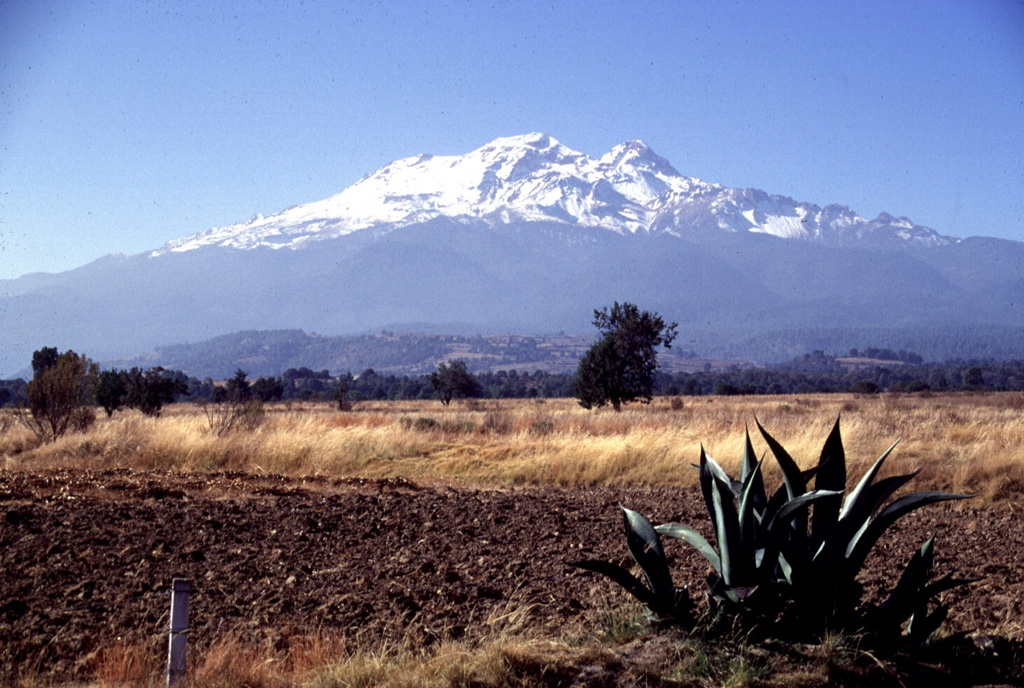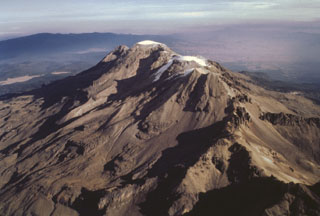Global Volcanism Program | Image GVP-05520

Iztaccíhuatl rises SW of the Puebla basin in central México. A series of overlapping cones constructed along a NNW-SSE trend forms the summit ridge, which is 6 km long just above the snowline. Glaciation has extensively eroded the summit and flanks of the dominantly Pleistocene edifice. The Toltec climbed Iztaccíhuatl and left terracotta, carved stone, jade, and obsidian artifacts just below the summit, forming the highest archeological site in North America.
Photo by Lee Siebert, 1997 (Smithsonian Institution).
![]() This image is made available under the Public Domain Dedication CC0 license, but proper attribution is appreciated.
This image is made available under the Public Domain Dedication CC0 license, but proper attribution is appreciated.

Iztaccíhuatl
